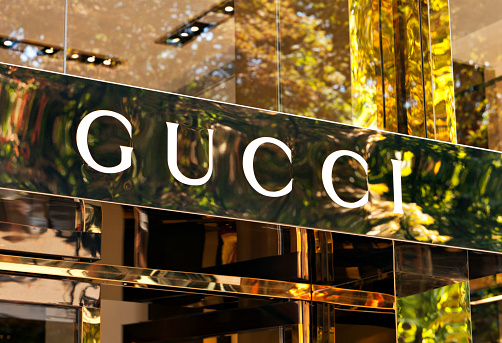Introduction
Gucci, a name synonymous with luxury, style, and sophistication, has established itself as one of the most iconic and revered fashion brands in the world. Founded in 1921 in Florence, Italy, by Guccio Gucci, the brand has evolved over the decades to become a symbol of opulence and innovation. In this guest post, we’ll take a closer look at the enduring legacy of Gucci, its journey through time, and the unique blend of tradition and innovation that sets it apart.
A Legacy of Craftsmanship
Gucci’s journey began as a small family-owned leather goods store that specialized in crafting high-quality luggage, saddlery, and accessories. The brand’s dedication to craftsmanship and attention to detail quickly gained recognition and loyalty from a discerning clientele. Guccio Gucci’s commitment to excellence set the foundation for a legacy that endures to this day.
In the 1950s, the double-G logo, inspired by the initials of the founder, became a symbol of the brand’s commitment to quality and luxury. The logo’s iconic design graced a range of products, from leather handbags to clothing and accessories. Gucci’s success led to the opening of boutiques in Milan and eventually to international expansion, establishing the brand as a global fashion force.
A Vision of Innovation
Gucci has always been at the forefront of innovation within the fashion industry. One of the most iconic creations in the brand’s history was the introduction of the bamboo-handled bag in 1947. Designed during World War II, when materials were scarce, the bamboo bag became a symbol of ingenuity and resourcefulness. This innovative spirit has remained a defining trait of the brand throughout its history.
In the 1960s, Gucci continued to push the boundaries of fashion with groundbreaking designs, including the iconic Flora silk scarf, commissioned for Grace Kelly. The Flora print, inspired by a painting gifted to Princess Grace of Monaco, showcased Gucci’s ability to blend timeless elegance with contemporary design.
Another groundbreaking moment came in the 1970s when Gucci launched its first ready-to-wear clothing line, changing the fashion landscape by making luxury more accessible to a broader audience.
Gucci Today: Creative Renaissance
Under the creative direction of Alessandro Michele, who took the helm in 2015, Gucci has experienced a creative renaissance. Michele’s designs embrace a bold, eclectic, and almost eccentric style that combines vintage influences with modern interpretations. The brand has reinvigorated its classic motifs, like the double-G logo and the horsebit, by incorporating them into new, imaginative designs.
Gucci has also become a pioneer in digital marketing and e-commerce, embracing the digital age and reaching younger generations. The brand has actively engaged with social media, creating campaigns that resonate with a wide and diverse audience. This approach has redefined luxury marketing in the 21st century, allowing Gucci to connect with consumers on a global scale.
Sustainability and Social Responsibility
In recent years, Gucci has taken steps to address sustainability and social responsibility, recognizing the importance of environmental and ethical considerations in the fashion industry. The brand has launched initiatives to reduce its carbon footprint, minimize waste, and support sustainability across the supply chain. Gucci has also taken a stand against discrimination and racism and has actively promoted diversity and inclusion in its campaigns and company culture.
Conclusion
Gucci’s enduring appeal lies in its ability to balance tradition and innovation. It continues to honor its rich heritage of craftsmanship and quality, while also pushing the boundaries of fashion with daring, contemporary designs. The brand’s commitment to sustainability and social responsibility reflects its evolving role in the modern world.
Gucci’s legacy is not just about fashion; it’s about redefining luxury and evolving with the times. As the brand continues to blend timeless elegance with cutting-edge creativity, it remains a symbol of opulence and innovation, setting the standard for luxury fashion in the 21st century.


